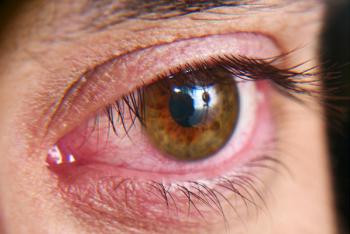
Surgery Has Significant HRQOL Implications for Children With Drug-Resistant Epilepsy
Investigators found that surgical intervention for epilepsy improves social functioning and increases the likelihood a patient will be free of seizures.
Surgical treatment for
The report, published online today in JAMA Network Open, suggests that surgery can be economically justified despite its high cost.
Between 0.5% and 1.0% of children are affected by epilepsy, and 25% to 40% of those will have epilepsy that does not respond to antiseizure medications, wrote the study investigators. Epilepsy can affect the lives of children in a variety of ways, they added, ranging from cognitive and behavioral struggles to social and emotional functioning. Previous research had shown that surgery can have a positive impact on HRQOL, they said.
“However, there is a lack of consensus on which aspects of HRQOL improve with seizure freedom after surgery and when it improves,” they wrote. In addition, most of the existing studies have limitations such as being retrospective in nature and lacking a comparison group.
Hoping to address those limitations and better understand the HRQOL implications of surgery, the investigators designed a multicenter, prospective study that directly compared patients receiving surgery with patients receiving medical therapy.
Children were recruited who had drug-resistant epilepsy, were aged 4 to 18 years (N = 265), and were evaluated for surgery at one of 8 epilepsy centers in Canada between 2014 and 2019. Of those, 111 went on to have surgery and 154 continued on medical therapy. The participants had a mean age of 11.0 years at baseline.
The study was designed to follow patients for up to 2 years, and 170 patients participated for the entire 2 years.
To track HRQOL, the investigators used the Quality of Life in Childhood Epilepsy Questionnaire-55 (QOLCE-55), which includes 4 domains: physical, cognitive, emotional, and social functioning. At baseline, the 2 cohorts had similar QOLCE-55 years, averaging 57.2 in the medical therapy group and 58.2 in the surgery group. However, the gap began to widen over time. After 6 months, the scores of surgical patients were 3.0 points higher; at 1 year, surgical patients had scores that were 4.9 points higher, and at 2 years, surgery-cohort scores averaged 5.1 points higher.
“HRQOL continued to improve in the first year after surgery, and thereafter remained stable 2 years after surgery,” the investigators wrote. “Among medical patients, HRQOL remained relatively unchanged over the 2-year follow-up.”
However, the improvement noted in patients undergoing surgery was limited to the social functioning subscale.
“This study did not show improvement in physical, cognitive, or emotional functioning after surgery compared with medical therapy,” the investigators said. “Our prior study also demonstrated that surgery did not have a direct effect on physical or cognitive functioning, but had an indirect effect on these functions that were mediated by seizure freedom.”
Within the surgery group, 72% of children reported being seizure free at 2 years compared with 33% in the medical therapy group. Those who achieved seizure freedom had a higher HRQOL, the authors said.
They said the major limitation of their research was that the study was not a randomized clinical trial, which the authors said would be the ideal design for comparison. However, they said such an approach would be unethical since it would require withholding care to children who were otherwise suitable candidates for surgery.
In their conclusion, the authors said their findings offer valuable insights about the costs and benefits of high-cost surgery.
“By demonstrating that epilepsy surgery leads to improvement in seizure freedom and HRQOL in children, which has downstream effects such as better educational and vocational attainment and reduced health care resource utilization and health care cost, our study provided objective evidence to justify the high costs of surgery and to improve access to surgery,” they said.
Reference
Widjaja E, Puka K, Speechley K, et al. Trajectory of health-related quality of life after pediatric epilepsy surgery. JAMA Netw Open. Published online March 27, 2023. doi:10.1001/jamanetworkopen.2023.4858
Newsletter
Stay ahead of policy, cost, and value—subscribe to AJMC for expert insights at the intersection of clinical care and health economics.













































